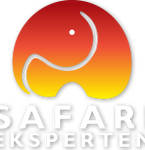Lake Eyasi
The lake can be reached after driving for a couple of hours down a gravel road south of the Ngorongoro crater and the town of Karatu, which is where you leave the busy main roads and most tourists behind you. Lake Eyasi is not really a destination for safari fans, as not many big animals are seen here. Visitors here usually come because of the Hadzabe tribe, who live in the arid region around the lake. They still live like people used to do until a few thousand years ago, as hunter gathers, and they use an unusual language with many “click” sounds, similar to that used by the hunter gatherer people of the Kalahari desert in southern Africa.
A visit to the Hadzabe people must be arranged in advance, and be carried out in the company of a local guide/interpreter, who knows where to find them at the time of your visit, as the Hadzabe have no permanent dwelling places or buildings. It will be possible to accompany the hunters (the men) on a traditional hunt using bows and arrows or the gatherers (the women) on a tour out into the bush to look for berries, roots and herbs. It will also be possible to visit the Datoga people, who also live in this area. They are more sedentary and live in huts, and often work as smiths, making items such as arrowheads for the Hadzabe people. Around the northern part of the lake there is a lot of vegetable production, especially of onions, while the lake's borders support a rich bird life and a beautiful view of the slopes of the Rift Valley to the west.
Highlights:
• Visit the Hadzabe poplin a hunt using bows and arrows
• Rich birdlife along the lake’s edges with a beautiful view of the slopes of the Rift Valley
High season: January to March and July to October










